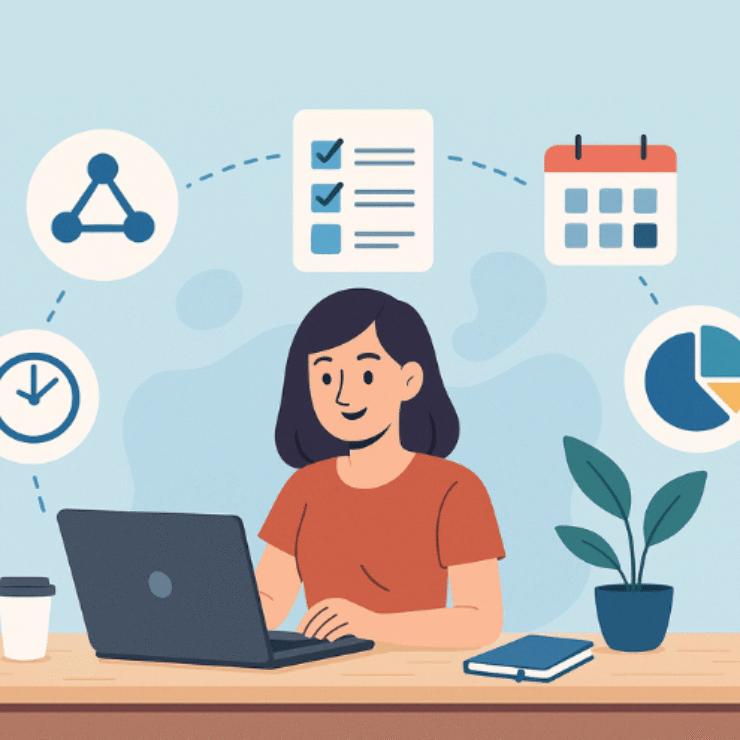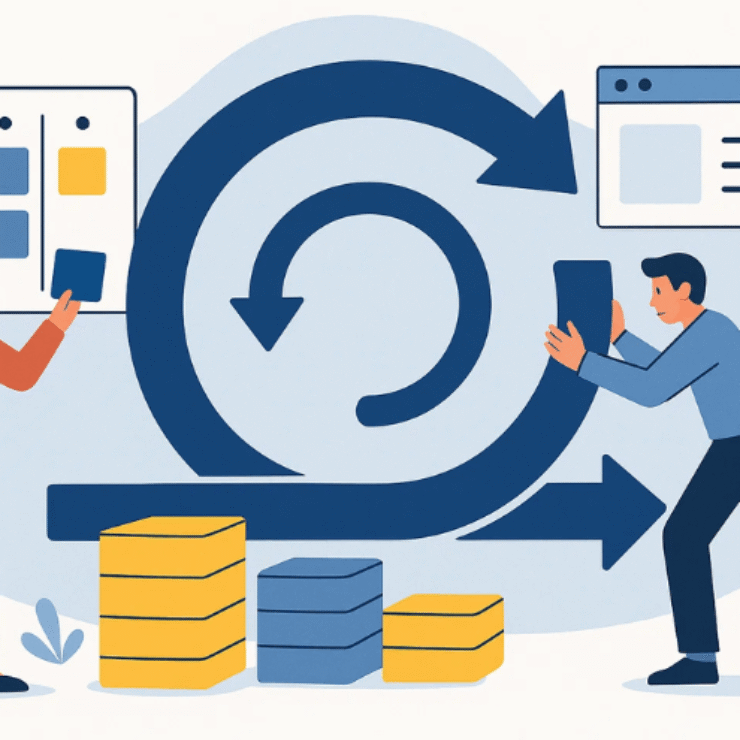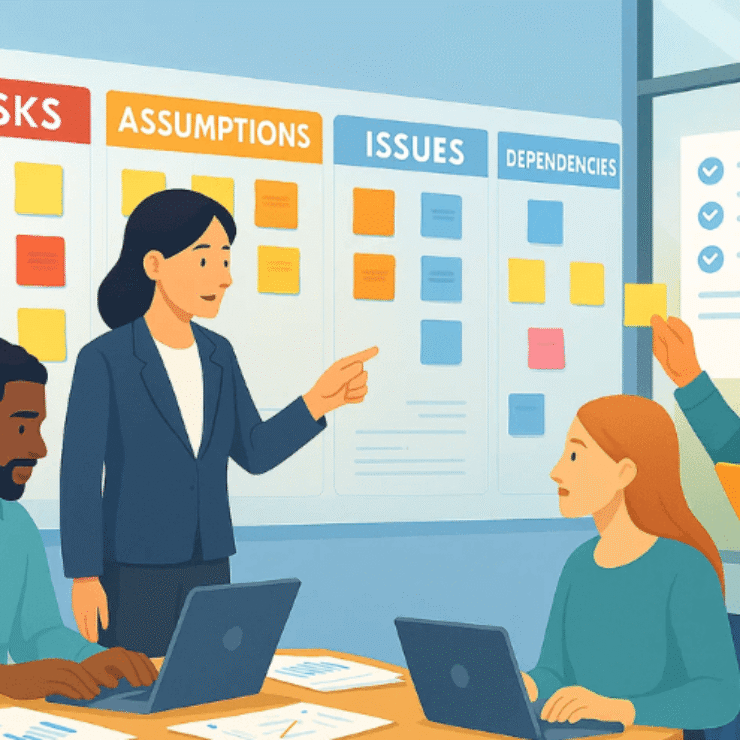The Silent Productivity Killer
Do you struggle with constant delays, distractions, and half-finished tasks? You’re not alone — and learning how to stop procrastinating at work is more critical than ever. Studies show nearly 20% of adults are chronic procrastinators, with even higher rates in modern workplaces full of endless pings, pressures, and competing priorities. This complete guide reveals why you procrastinate, plus proven psychology-backed strategies to finally overcome procrastination and get more done with less stress.
Why We Procrastinate at Work
- Fear of failure: Big, important projects can feel intimidating. Starting them risks imperfection, or worse — visible failure.
- Perfectionism: If it can’t be perfect right away, why even begin?
- Overwhelm: Too many competing tasks can create paralysis, leaving you unsure where to start.
- Lack of clarity: When priorities aren’t clear, your brain defaults to low-effort distractions.
Procrastination Doesn’t Mean Laziness
This is a crucial mindset shift. Many chronic procrastinators label themselves as “lazy,” “undisciplined,” or “not cut out for serious work.” But that couldn’t be further from the truth.
In fact, research from Dr. Timothy Pychyl, a leading psychologist on procrastination, shows it’s often a short-term mood repair strategy. When you put off a tough task, you get temporary relief from stress or anxiety. This immediate emotional payoff tricks your brain into repeating the cycle.
Recognizing this allows you to switch from self-blame to strategy. Instead of internalizing procrastination as a flaw, you can see it as a sign to adjust your habits, environment, or mindset — which is exactly what the next section is all about.
How to Stop Procrastinating at Work: Proven Strategies
Here’s how to stop procrastinating at work using structured, psychology-backed methods that directly target the real reasons you put things off.
- Break Tasks into Smaller Steps
Large projects like “Complete Q2 budget presentation” often feel overwhelming. Your mind sees a mountain, and instinctively tries to avoid it. Instead, break work into tiny, specific, and actionable steps. For example:- Gather last month’s sales data
- Draft the introduction slide
- Create comparison chart
- Write summary bullet points
Each small step gives your brain a quick dopamine reward, reducing mental resistance. It’s one of the simplest but most powerful ways to overcome procrastination — because starting becomes much less intimidating, and continuing becomes almost automatic.
A Harvard Business Review article also confirms that small wins help sustain motivation over long, challenging projects.
- Use the Time Blocking Method
Unstructured workdays are a procrastination trap. Without a clear roadmap, you drift between checking emails, attending meetings, and half-heartedly tackling to-dos.Time Blockingchanges this by assigning dedicated slots on your calendar for specific tasks. For instance:- 🕘 9:00-10:30 AM: Draft proposal
- 📧 10:30-10:45 AM: Quick email responses
- 📊 11:00-12:00: Financial review
This simple practice creates urgency, builds healthy pressure, and limits the mental space available for procrastination.
Plus, it helps you protect your deep work hours — those precious, uninterrupted periods when you can actually make progress on high-value projects.
- Apply the Two-Minute Rule
Productivity expert David Allenpopularized the Two-Minute Rule with this elegant guideline:If a task takes two minutes or less, do it immediately. Reply to that quick email, upload that document, send that follow-up note — don’t let tiny jobs pile up. They might feel harmless in isolation, but collectively they clog your mental bandwidth and amplify stress, which feeds procrastination.Start using the two-minute rule today. You’ll be surprised how much mental space it frees up, making it easier to tackle larger priorities without the nagging weight of unfinished micro-tasks. - Set Clear & Realistic Deadlines
A vague goal like “I’ll get to it this week” tells your brain there’s plenty of time. As a result, work expands to fill the days — or worse, you end up cramming it last minute. Replace open-ended timelines with specific, realistic deadlines, such as:- “Complete the draft by Wednesday at 4 PM.”
- “Have the research phase done by tomorrow lunch.”
This technique also builds accountability if you’re leading a team. When everyone knows exactly what’s expected and by when, there’s far less room for silent delays — dramatically reducing the temptation to stop procrastinating at work only once panic kicks in.
- Try the Pomodoro Technique
Long, uninterrupted stretches of focus often fail because they’re unrealistic. Our brains simply aren’t wired to maintain high concentration for hours on end.The Pomodoro Technique offers a smarter solution. You work in short, intense sprints (usually 25 minutes), followed by a 5-minute break. After four cycles, you take a longer 15-30 minute break.This approach taps into urgency — it’s far easier to start a task knowing it’s “just 25 minutes.” It also reduces mental fatigue, keeping your mind fresher and more engaged throughout the day. - Optimize Your Workspace
Your environment dramatically shapes your behavior. A cluttered, noisy, or visually distracting workspace silently encourages procrastination. Here’s why: your brain constantly scans for stimulation. If your desk is chaotic, your attention scatters. Try this:- Keep only essential tools and papers within arm’s reach.
- Silence unnecessary notifications on your phone and computer.
- Use noise-canceling headphones or ambient playlists to minimize background disruptions.
A streamlined space reduces friction, helping you stop procrastinating at work by making it easier to dive into important projects without constant temptation.
- Get an Accountability Partner or Use Tools
If sheer self-discipline isn’t cutting it, add some external pressure.- Share daily goals with a colleague or friend who can check in on your progress.
- Use simple project tracking tools like Karya Keeper or Asana to visually see tasks moving forward.
- Even a Slack channel for daily updates can build gentle peer pressure.
Accountability turns private goals into shared commitments. This is backed by studies in organizational psychology which show that social accountability significantly increases task follow-through.
How to Overcome Procrastination Long-Term
Most people chase productivity hacks hoping for instant transformation. But truly overcoming procrastination is about building supportive, sustainable habits:
- Review goals weekly: Check your progress and adjust priorities before you drift too far off track.
- Protect your energy: Proper sleep, balanced nutrition, and short mental breaks are essential. You can’t focus if you’re running on empty.
- Learn to say no: Overcommitting guarantees overwhelm — one of the most common procrastination triggers.
Remember: the goal isn’t to become some productivity robot. It’s to create systems that make productive action easier and more satisfying than avoidance.
Expert Insights: What Psychology Teaches Us About Procrastination
Procrastination isn’t merely a lack of discipline — it’s deeply tied to how your brain manages discomfort. Dr. Piers Steel, author of The Procrastination Equation, calls it a “self-regulation failure.”
Studies from the University of Sheffield found that people procrastinate to improve their mood in the short term, choosing feel-good distractions over hard work. This is why Instagram, Reddit, or even reorganizing your folders becomes so appealing right before a daunting task.
Knowing this, you can outsmart the impulse by:
- Breaking tasks into tiny, low-friction starting steps.
- Using time constraints like Pomodoros or hard deadlines to add urgency.
- Rewarding yourself after tackling a tough task.
These approaches aren’t gimmicks — they directly counter how procrastination hijacks your brain’s pleasure circuits.
When to Seek Professional Help
Also Read
Project Management Guide
S Curve in Project Management
Top Web Based Project Management Softwares
Portfolio Management vs Project Management
Critical Path Method
Conclusion
Learning how to stop procrastinating at work isn’t about heroic levels of willpower. It’s about crafting small systems and habits that make it easier to start than to avoid.
By consistently applying these strategies, you’ll gradually retrain your brain, conquer procrastination, and finally end your workdays with real satisfaction — and far less stress.
FAQs
How can I stop procrastinating at work immediately?
Start with the two-minute rule. Knock out tiny tasks to build momentum. For larger projects, break them into the first easy step — like opening the document or outlining three bullet points.
What are the best ways to beat procrastination at work long-term?
Use a blend of Time Blocking, the Pomodoro Technique, and weekly reviews. Together, these reduce overwhelm, keep priorities clear, and help you stop procrastinating consistently.
Why do I keep procrastinating even on small tasks?
Small tasks often feel boring or insignificant, triggering your brain to avoid them. Use micro-deadlines and reward yourself with short breaks to make them more appealing.
How does procrastination impact my performance at work?
It typically results in last-minute rushes, lower-quality work, higher stress, and can strain trust with your team or manager.
How do I overcome procrastination if I’m always distracted?
Optimize your workspace — declutter, silence notifications, and use short focus sprints like the Pomodoro Technique. Over time, this helps train your brain to stay engaged longer.



